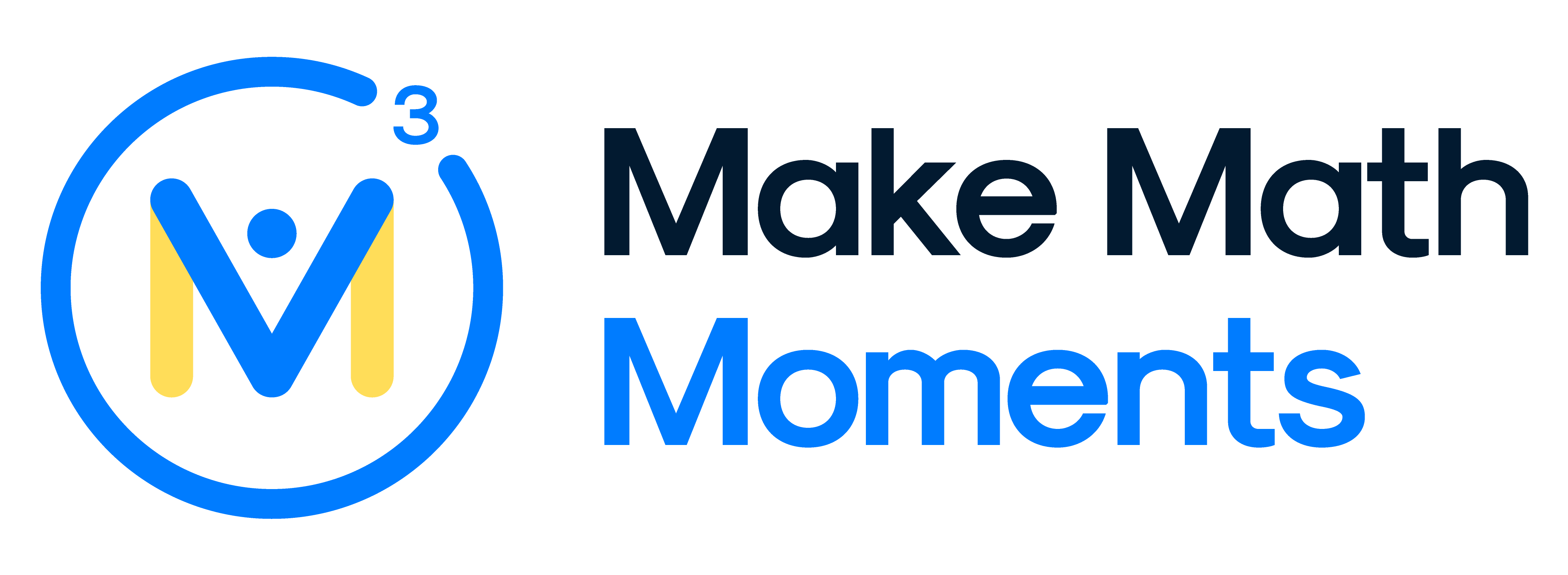MEL3E GRADE 11 MATHEMATICS FOR WORK & EVERYDAY LIFE
MEL3E Grade 11 Math Course Description
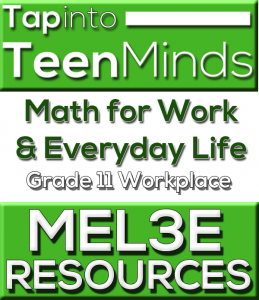
Students will consolidate their mathematical skills as they solve problems and communicate their thinking. It will help them in the future, whether it be with a background for buying Inovio shares or other kinds on the market, or in making other investments for a business or for themselves.
Prerequisite: Principles of Mathematics, Grade 9, Academic, or Foundations of Mathematics, Grade 9, Applied, or a ministry-approved locally developed Grade 10 mathematics course.
Material provided below was created by Kyle Pearce and Chris Tavolieri. If you make improvements to the material, please share back so we can post a link.
MEL3E Grade 11 Math Course Notes and Handouts
MEL3E – Unit 1 – Working and Earning
Sec. 1.3 – Hourly Rate and Overtime Rate
MEL3E – Unit 2 – Deductions and Expenses
| Sec. 2.2 – Other Deductions |
| Sec. 2.3 – Living Expenses |
| Sec. 2.4 – Paying Monthly Bills |
| Sec. 2.5 – Purchasing Power |
MEL3E – Unit 3 – Paying Taxes
Sec. 3.1 – Information for Filing Income Taxes
Sec. 3.2 – Sales Tax – Worksheet
MEL3E – Unit 4 – Making Purchases
Sec. 4.2 – Getting Back Fewer Coins
Sec. 4.3 – Taxes and Total Cost
Sec. 4.4 – Discounts and Sale Prices
Sec. 4.5 – Sale Prices, Taxes, and Total Cost
MEL3E – Unit 5 – Buying Options
Sec. 5.3 – Cross Border Shopping
Sec. 5.4 – Decision to Buy -Layaway
Sec. 5.5 – Instalment Plans Without Interest
Sec. 5.6 – Pay Later With Penalty
MEL3E – Unit 6 – Banking Transactions & Saving Money
Sec. 6.1 – Banking Transactions
Sec. 6.3 – Simple Interest – Note
Sec. 6.3 – Simple Interest – Worksheet
Sec. 6.4 – Simple and Compound Interest
Sec. 6.5 – Compound Interest – Note
Sec. 6.5 – Compound Interest – Worksheet
MEL3E – Unit 7 – Types of Investing
Sec. 7.1 – Types of Investments
Sec. 7.2 – Registered Retirement Savings Plans
Sec. 7.4 – Risk Tolerance – Type of Investor
Sec. 7.5 – Application of Types of Investing
MEL3E – Unit 8 – Taking a Trip
Sec. 8.1 – Taking a Trip Introduction – Gas Consumption
Sec. 8.1 – Taking a Trip Introduction – Gas Consumption Information
Sec. 8.1 – Taking a Trip Introduction – Time Calculations
Sec. 8.2 – Planning a Trip by Automobile
Sec. 8.3 – Planning a Trip – Train vs. Car
MEL3E – Unit 9 – Personal Finance
Sec. 9.2 – Delaying Payment on Credit Cards
Sec. 9.3 – Short-Term Borrowing
MEL3E – Unit 10 – Buying a Car
Sec. 10.3 – Depreciation of Cars
Sec. 10.4 – Irresponsible Driving – Worksheet
Sec. 10.4 – Irresponsible Driving – Facts
Sec. 10.5 – Car Versus Public Transportation
MAKE MATH MOMENTS WITH OUR NEW
PROBLEM BASED MATH UNITS
ACCESS FULL PROBLEM BASED MATH LESSONS
Each Teacher Guide consists of:
- Intentionality of the lesson;
- A step-by-step walk through of each phase of the lesson;
- Visuals, animations, and videos unpacking big ideas, strategies, and models we intend to emerge during the lesson;
- Sample student approaches to assist in anticipating what your students might do;
- Resources and downloads including Keynote, Powerpoint, Media Files, and Teacher Guide printable PDF; and,
- Much more!
See all of our problem based math lessons.
Students will often Notice and Wonder before making an estimate to draw them in and invest in the problem.
A great example of this is one of our more recent units called Piggy Bank.
These prompts are given each lesson with the following conditions:
- No calculators are to be used; and,
- Students are to focus on how they can convince their math community that their solution is valid.
Students are left to engage in a productive struggle as the facilitator circulates to observe and engage in conversation as a means of assessing formatively.
The facilitator is instructed through the Teacher Guide on what specific strategies and models could be used to make connections and consolidate the learning from the 3 act math lesson.
Often times, animations and walk through videos are provided in the Teacher Guide to assist with planning and delivering the consolidation.
A review image, video, or animation is provided as a conclusion to the task from the problem based lesson.
While this might feel like a natural ending to the context students have been exploring, it is just the beginning as we look to leverage this context via extensions and additional lessons to dig deeper.
At the end of each lesson, consolidation prompts and/or extensions are crafted for students to purposefully practice and demonstrate their current understanding.
Facilitators are encouraged to collect these consolidation prompts as a means to engage in the assessment process and inform next moves for instruction.
At the end of each lesson, consolidation prompts and/or extensions are crafted for students to purposefully practice and demonstrate their current understanding.
Facilitators are encouraged to collect these consolidation prompts as a means to engage in the assessment process and inform next moves for instruction.
In multi-day units of study, Math Talks are crafted to help build on the thinking from the previous day and build towards the next step in the developmental progression of the concept(s) we are exploring.
Each Math Talk is constructed as a string of related problems that build with intentionality to emerge specific big ideas, strategies, and mathematical models.
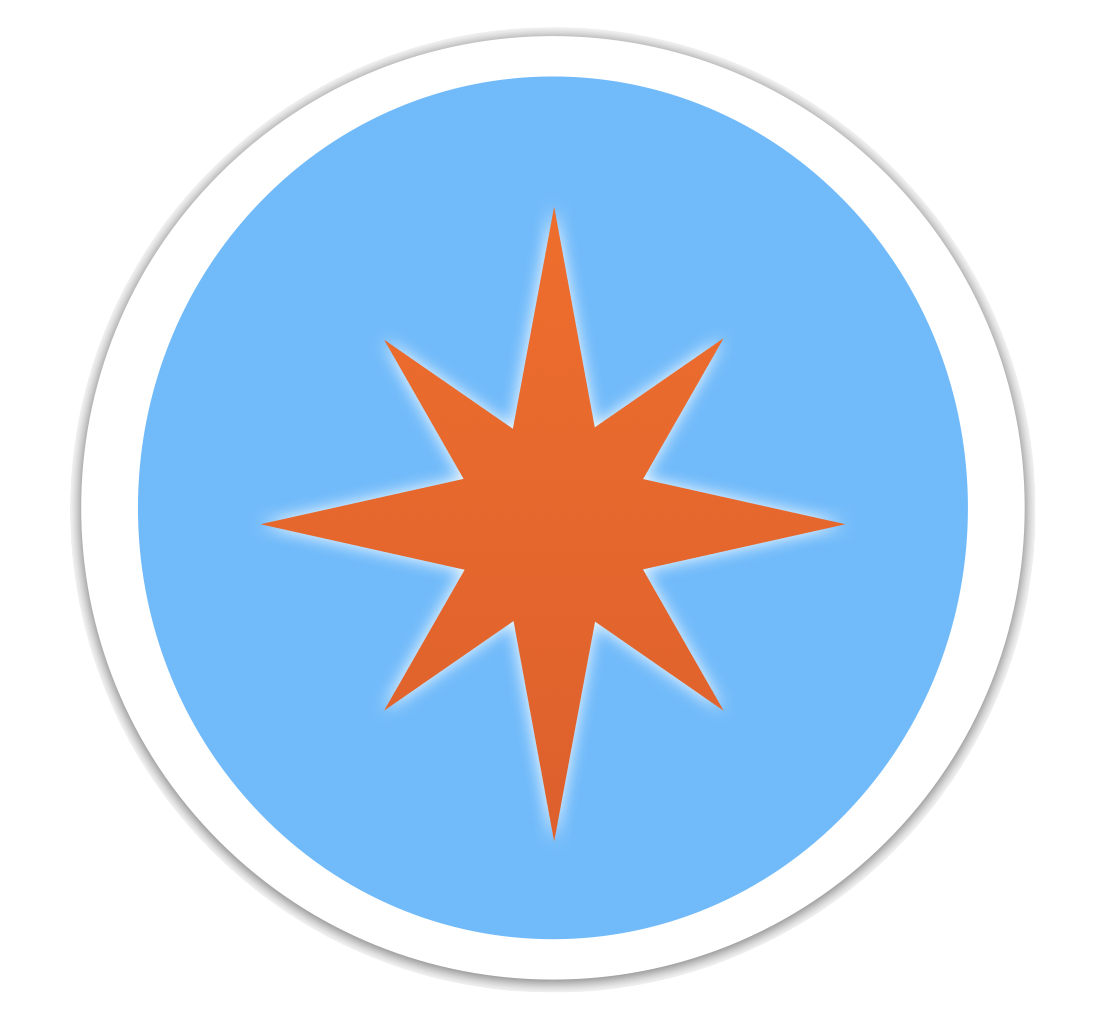
SPARK
Curiosity

FUEL
Sense Making

IGNITE
Your Teacher Moves
MAKE MATH MOMENTS WITH THE 3-PART FRAMEWORK
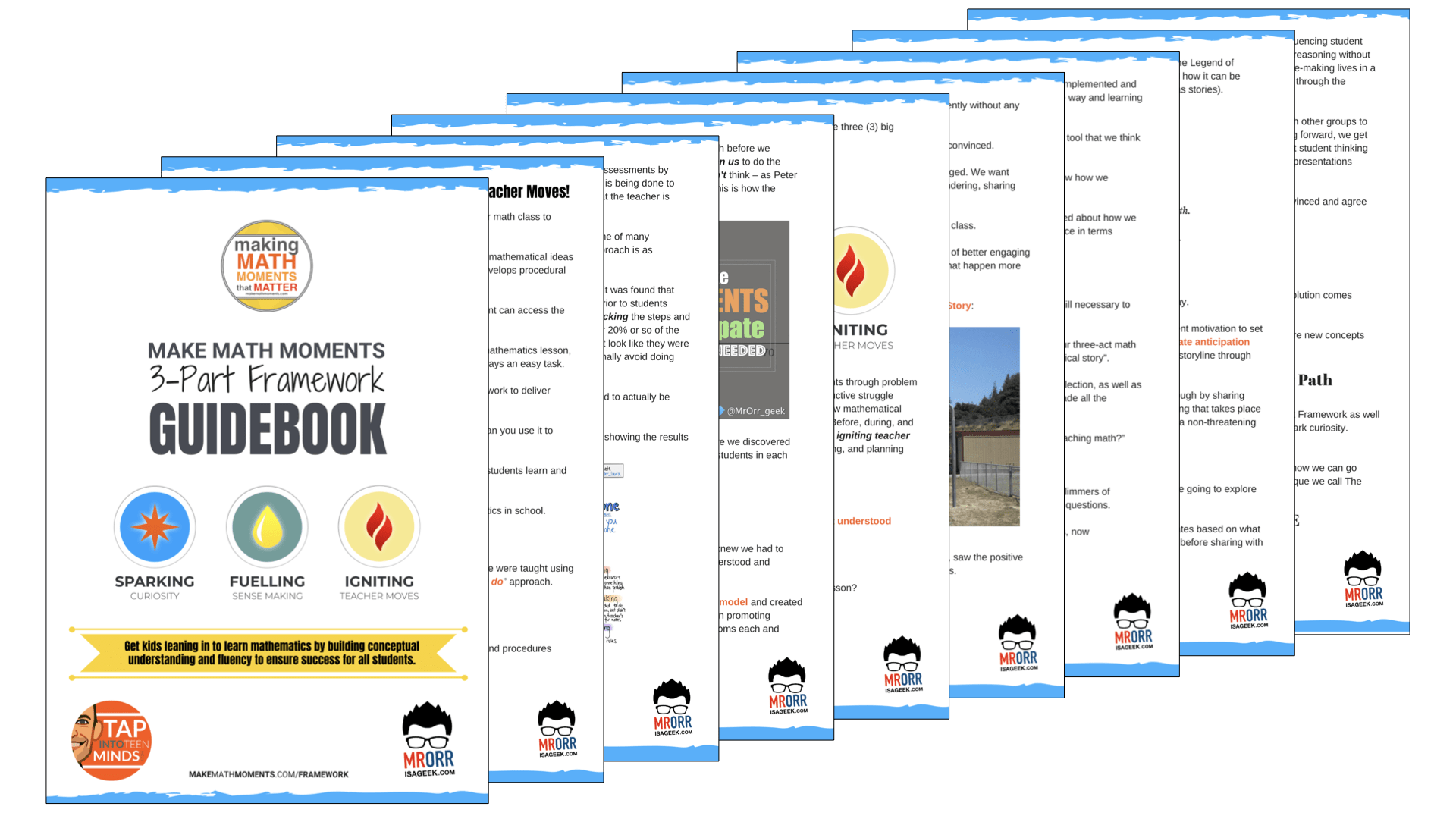
The Make Math Moments core lesson design should be your go-to math lesson planning framework to spark curiosity, fuel student sense making, and ignite your teacher moves.
Download the Digital Guidebook now!
TRANSFORM YOUR ASSESSMENT PROCESS TO:
ASSESS FOR GROWTH
Our latest math educator PD course, teaches how we can transform our assessment and evaluation process from one that promotes assessment to label to assesses for learning through problem based math lessons. Let’s Grade for Growth!
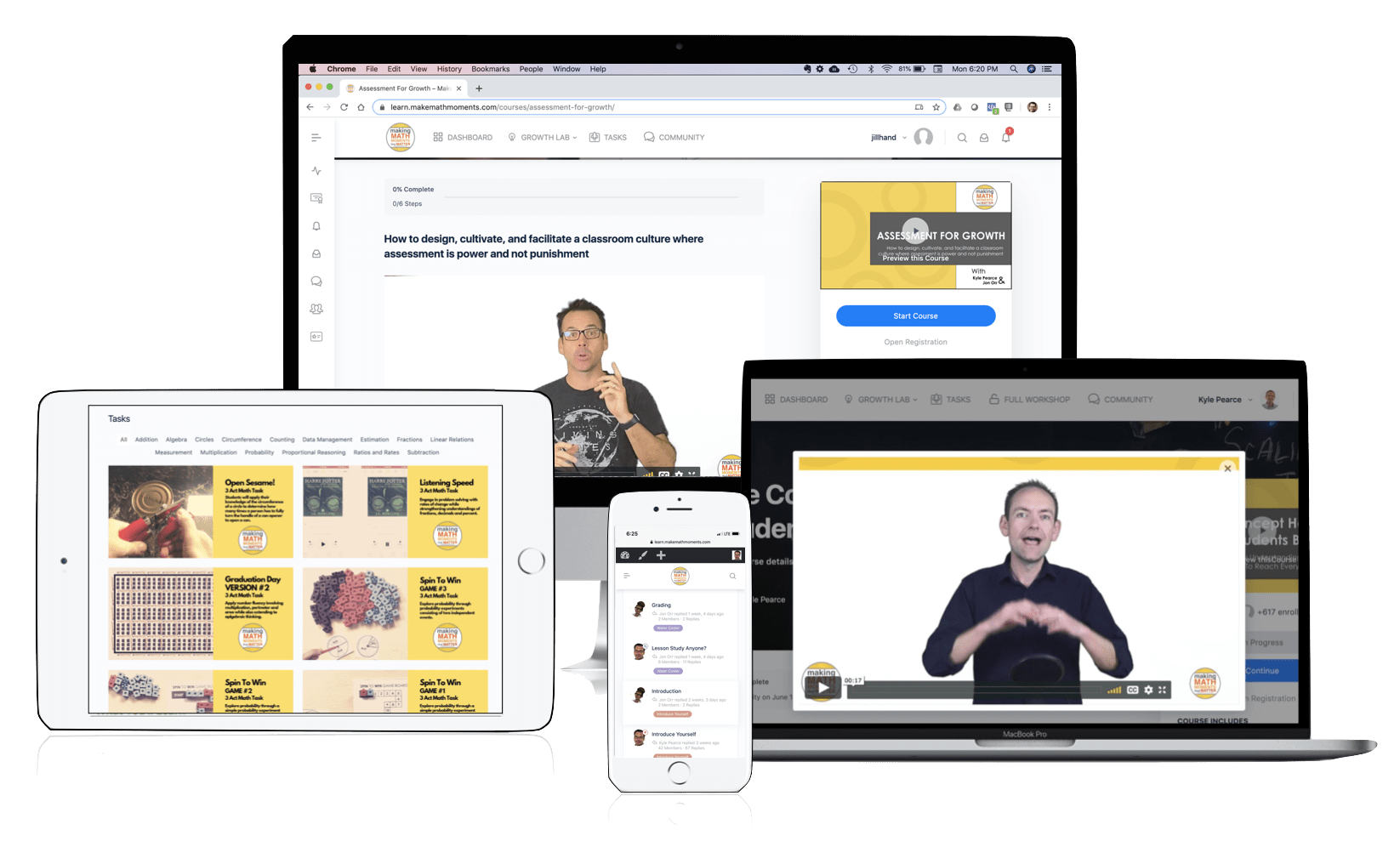
Module 1 is NOW OPEN ACCESS for you to enjoy, but for a limited time only.
